Polaroid cameras have made a massive comeback in recent years, adding a unique, retro touch to our digital age. However, these classic devices can sometimes produce unexpected results, leaving users puzzled and disappointed. One common issue faced by many is their Polaroids coming out white. This article aims to delve into the reasons behind this phenomenon, providing potential solutions to ensure that your next snapshot is picture perfect.
Common Causes
The issue of white Polaroid photos can be caused by several factors, and it is important to understand all of them in order to take the necessary steps to fix the problem. Below is a list of common causes that could result in blank or washed-out photos:
Camera Settings
When you take pictures with your camera, make sure that the settings are appropriate for the situation. The wrong balance of ISO, white balance, and exposure can lead to blank photos. Additionally, make sure that you aren’t using an overly bright flash or too slow of a shutter speed.
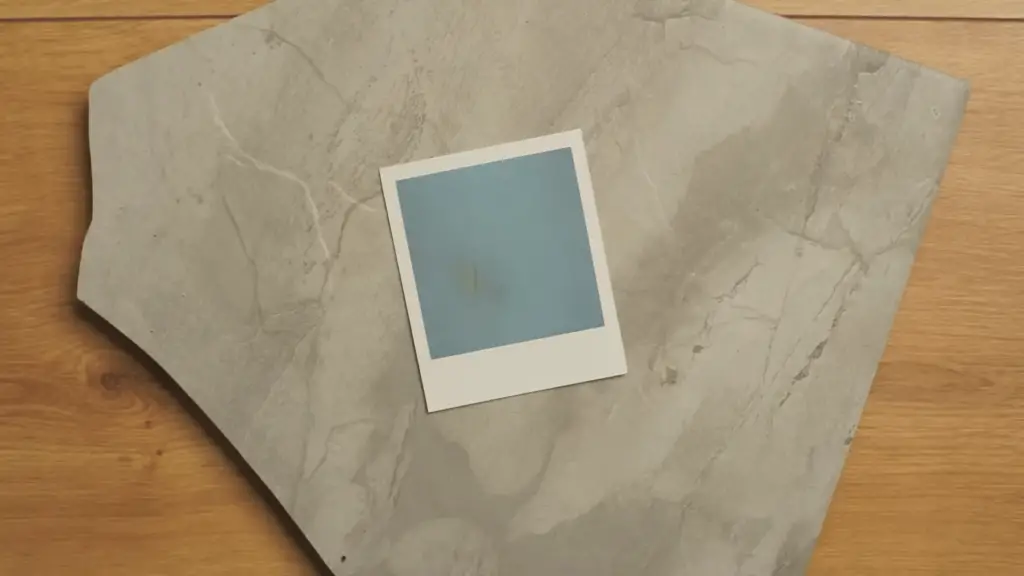
Outdated Film
Incorrect Loading
Sometimes issues with white photos can be attributed to the user incorrectly loading their film into the camera. It is important to make sure that you have loaded your Polaroid correctly by following the instructions on the package.
Poor Lighting
Taking pictures in low light can also cause white photos to appear. Be sure to use a flash or another bright enough source of light when taking pictures with a Polaroid camera. Additionally, avoid taking photos in direct sunlight as it will make the images overexposed and washed-out looking.
Other Factors
There are other factors that could be causing white photos to appear, such as dust on the lens or an issue with the shutter mechanism. If none of these solutions solve your problem, then it may be necessary to take your Polaroid camera to a professional for repairs.
By understanding and addressing all of these possible causes, you can get back to capturing beautiful memories with your Polaroid camera! With a few adjustments and troubleshooting, it is possible to get the perfect picture every time.

How to Avoid?
Fortunately, there are some simple steps you can take to reduce the chances of your polaroids coming out white. First, make sure your camera is in good condition before taking the photos. Check for any signs of damage and ensure all batteries are charged correctly. Second, keep your film away from direct sunlight or other sources of light as much as possible when loading it into the camera. This will help prevent overexposure, which can lead to your pictures coming out too light. Finally, if you are using an instant polaroid camera, make sure to read the instructions carefully and follow them precisely.
What Does It Mean?
When a polaroid comes out white it means that either not enough or too much light has been exposed to the film. If too little light is exposed, the image will appear faint and lacking in detail. On the other hand, overexposure will make the image appear completely white or washed out. Either way, it can be quite a disappointment when you get your photos back only to find that they are all blank! [2]
Tips for Taking Better Photos
Taking good polaroid photos requires some practice and patience. Here are a few tips to help you get the most out of your photos:
- Load the film correctly – Take your time when loading the film into your camera and make sure it is correctly seated before snapping any pictures.
- Use a tripod or support – If you can, use a tripod or other support to keep your camera steady while you take photos. This will help prevent any blurriness from camera shake.
- Focus before pressing the shutter – Make sure your photo is in focus before pressing the shutter button. You can do this by using the manual focus ring on your camera or by using autofocus if available.
- Take multiple shots – Taking multiple shots of the same scene can help to get the perfect picture.
- Adjust your settings – Play around with your camera’s settings to see how they affect your photos. Different lighting conditions and subjects will require different adjustments, such as changing shutter speed, ISO, and aperture.
- Experiment with filters and film types – Try using different filters and film types to achieve different effects in your photos. You can also experiment with double exposures and other creative techniques.
- Store photos properly – Make sure that your film is stored correctly when not in use, as exposure to light can damage it over time. It’s also important to make sure the camera is kept dry at all times to avoid water damage.
- Have fun! – Polaroid cameras can be a lot of fun to use, so don’t forget to have some fun with them and take some great photos.
With these tips in mind, you should be well on your way to creating amazing polaroid photos that are sure to impress!
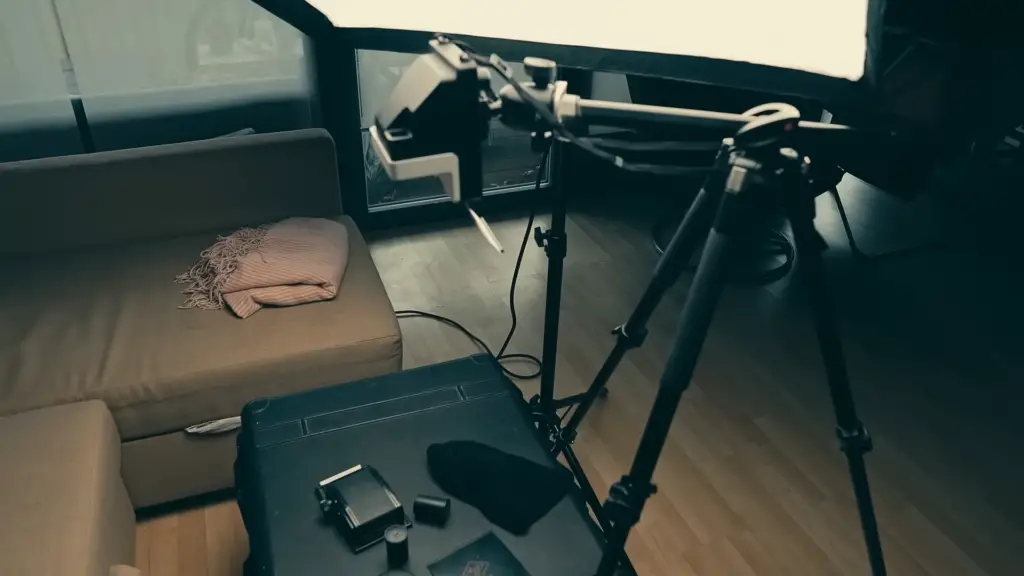
Additional Tips
If you are still having trouble getting your polaroid photos to come out properly, here are a few additional things to consider:
- Check the battery – Make sure the battery is charged and correctly installed in your camera. Without power, you won’t be able to take any pictures.
- Clean and maintain your camera – Make sure that all lenses, viewfinders, and filters are clean and free of dirt or dust. Also check that the shutter is working correctly.
- Check the film – Make sure the film has been stored in a cool, dry environment away from direct light to avoid damage. If it hasn’t been used recently, check that it isn’t expired before loading into your camera. [3]
- Check the light – Taking photos in different lighting conditions can affect the outcome of your photos. Try taking some test shots in different types of light to get a feel for what works best for you.
- Be patient – Polaroid cameras take time to develop their pictures, so give it time before assuming that something is wrong with the camera or film.
- Practice, practice, practice! – Just like with any other type of photography, polaroid photography takes time and practice. Don’t be discouraged if some of your pictures don’t come out perfectly the first few times. Keep taking photos and experimenting until you find a style that works for you!
Things to Avoid
It is important to remember that a few common mistakes can have an impact on the output of your polaroid photos. Make sure to avoid using outdated film, taking pictures in low light environments, and using a flash that’s too close or too far away from the subject. Additionally, make sure that your camera is properly set-up before you take any pictures – incorrectly adjusted settings can lead to poor results.
Finally, it’s important to note that polaroid photos can be affected by temperature and humidity. If you find the environment in which you’re taking your photos is particularly cold or humid, there is a chance that this may affect the colors of your images. Make sure to store your film in a cool and dry place and to use film that is suited for the environment you’re shooting in. [4]

Keeping Your Polaroids Looking Good
To ensure that your polaroid photos turn out great, there are a few important steps you should take:
- Use high quality film – this will help to ensure better output from your camera.
- Make sure you’re taking your photos in a well-lit environment.
- Avoid using a flash unless absolutely necessary – too much light can lead to overexposure and white output.
- Adjust the settings on your camera for best results.
- Store film correctly – keep it away from heat, humidity and direct sunlight.
- Clean your lens regularly – dirt and dust can have an effect on the quality of your images.
Should You Shake Polaroids?
The practice of shaking polaroids to speed up the development process is a common misconception that many photographers have. While it may seem like a sensible idea, this can cause severe damage to your photos as shaking accelerates the formation of white areas on them.
If your polaroids are coming out looking white, it’s likely that you’ve been shaking them before they had a chance to fully develop. To avoid this in the future, be sure not to shake Polaroid photos after taking them, as this will only further damage the image. Instead, be patient and leave your Polaroid photos to develop on their own without any disturbance.
To ensure you get the best results from your polaroids, always follow the instructions provided in the manual that comes with your film. Doing so will guarantee you get high-quality images that last a lifetime.
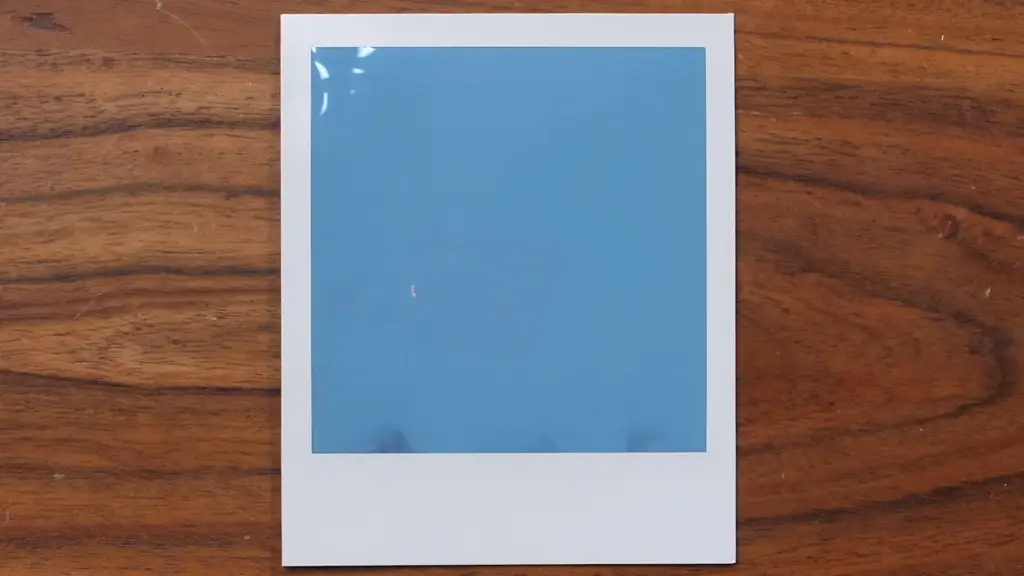
Finally, if you’re unsure about your polaroids coming out white, it’s always best to consult a professional photographer for advice and guidance. With their experience and knowledge of the film development process, they can advise you on the best ways to ensure your photographs come out looking perfect every time. [5]
FAQs
Why are my Polaroids coming out white washed?
Your Polaroids may be coming out white washed because you’ve been shaking them before they had a chance to fully develop. This accelerates the formation of white areas, leading to an uneven reaction that can cause blurred images or patches of white on your photos. To avoid this in the future, be sure not to shake Polaroid photos after taking them and leave them to develop on their own without any disturbance.
How can I get the best results from my Polaroids?
To ensure you get the best results from your polaroids, always follow the instructions provided in the manual that comes with your film. Doing so will guarantee you get high-quality images that last a lifetime. Additionally, it’s recommended to consult a professional photographer for advice and guidance. With their experience and knowledge of the film development process, they can advise you on the best ways to ensure your photographs come out looking perfect every time.
Can I use my Polaroid camera in low light situations?
Yes, most modern Polaroid cameras have built-in flash systems that allow you to take pictures in low light situations. However, it’s important to note that the flash can only be used with certain types of film, so be sure to check your manual before taking photos in darker environments. Additionally, keep in mind that you may need a tripod or some other form of support for long exposure shots to ensure the best possible quality.
Are there any precautions I should take when using a Polaroid camera?
Yes, there are some basic precautions you should take when using a Polaroid camera. Be sure to read the manual that comes with your film before taking photos and follow all of the instructions provided. Additionally, avoid shaking the photo after it’s been taken as this can cause damage to the image. Finally, if you’re unsure about your photos coming out looking right, it’s always best to consult a professional photographer for advice and guidance.
Does heat ruin Polaroids?
Heat can have a negative effect on Polaroid photos as it accelerates the development process and can cause uneven reactions that lead to white patches or blurry images. To avoid this, be sure to store your polaroids in a cool, dry place away from direct sunlight and any sources of heat. Additionally, keep in mind that certain types of film may be sensitive to temperature fluctuations and can be damaged if exposed to extreme changes – so make sure to check the instructions before taking photos in hot environments.
What are some tips for taking better Polaroid photos?
When it comes to taking Polaroid photos, there are a few key tips you should follow that will help ensure your pictures come out looking perfect every time. Firstly, use a tripod or some other form of support when taking long exposure shots. This will help to minimize camera shake and ensure a sharper image. Additionally, pay attention to the natural light in your environment as this can have an impact on the overall quality of your photos – by learning how different lighting conditions affect the output, you’ll be able to adjust your settings accordingly for the best results.
Finally, practice makes perfect – so take your time and experiment with different angles, zooms and exposures to get a feel for how your camera works before taking important shots. With enough practice, you’ll develop an eye for composition that will help produce beautiful images.
How do I make my Polaroid darker?
If you find that your Polaroid photos are coming out too light and you want to make them darker, there are some simple adjustments you can make. Firstly, check the settings on your camera and ensure that the film speed is set correctly for the environment – if it’s too slow, the photo will appear washed out. Additionally, try using a different type of film as some are designed for darker outputs than others. Finally, you can also try using a flash filter to control the amount of light that reaches the film – this will create darker photos with more contrast and depth.
Do Polaroids last forever?
Polaroid photographs can last a long time and are known for their archival qualities, but it’s important to remember that they are still susceptible to damage and deterioration over time. To ensure your photos stay in good condition, be sure to store them in a cool, dry place away from any sources of heat or light. Additionally, avoid touching the surface of your photos as the oils from your skin can cause discoloration and fading. With proper care and maintenance, Polaroid photographs will last a lifetime.
Can I scan Polaroids?
Yes, you can scan Polaroid photographs to create digital versions and preserve the image for future generations. However, it’s important to note that scanning a Polaroid can damage or distort its original quality as it may not reproduce all of the subtle colors or details in the photo. Additionally, some scanners may struggle with very old Polaroids as the material may be too fragile or scratched. It’s always best to consult a professional for advice and guidance on scanning your photos to ensure you get the best results.
Is the cold bad for Polaroids?
Extreme cold temperatures can have a damaging effect on Polaroid photos as it can cause the film to become brittle and reduce its overall quality. To avoid this, be sure to store your photos in a cool, dry place away from any sources of extreme heat or cold. Additionally, keep in mind that certain types of film may be more sensitive to temperature fluctuations than others – so always check the instructions before taking photos in colder environments. With these simple precautions, your Polaroid photographs should stay safe and last a lifetime.
Useful Video: Fujifilm Instax Mini 11 Fix for WHITE BLANK Pictures (not developing photos)
Conclusion
In conclusion, the issue of your polaroids coming out white can be attributed to any number of causes. From expired film to light leaks in the camera, it is important to troubleshoot each potential problem one by one until a solution is found. Knowing what causes this issue and how to fix it can save you from the disappointment and frustration of wasted polaroids!
References
- https://support.polaroid.com/hc/en-us/articles/115012532668-Why-are-my-photos-completely-black-or-completely-white-
- https://www.instaxus.com/faqs/my-film-is-coming-out-blank-white-whats-the-reason/
- https://instantcamerablog.com/tips-and-tricks/instax-mini-9-film-overexposed/
- https://www.ifixit.com/Answers/View/290947/Why+does+the+fujiflim+come+out+white
- https://www.look3.org/why-are-my-polaroids-coming-out-white/





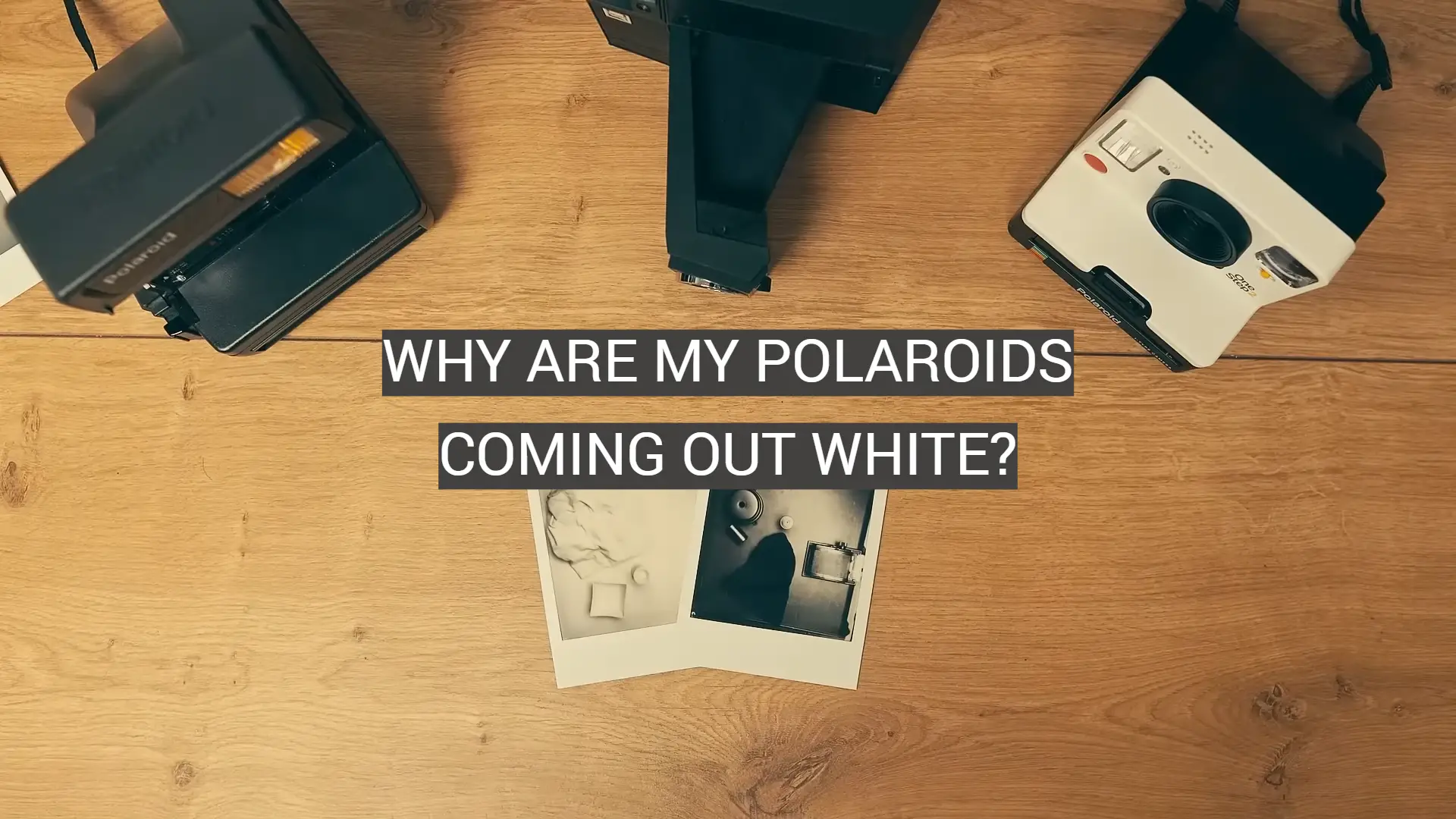
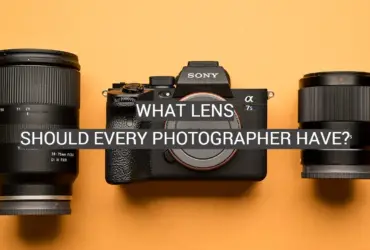




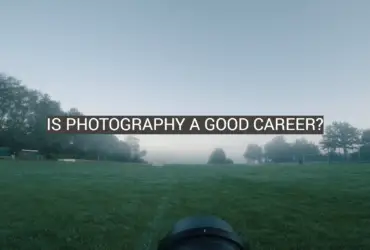
Leave a Reply